Signals in the mmWave range require extra care and more expensive components than at sub-6 GHz frequencies.
Data demands keep pushing for more bandwidth in wireless networks, and this trend will surely continue. AI, autonomous vehicles, AR/VR, and other technologies will see to that. The mmWave spectrum allocated for 5G can meet the bandwidth needs, but not without economic and technical tradeoffs.
The benefits of mmWave revolve around its capacity. This spectrum, from roughly 30 GHz to 300 GHz (5G mmWave starts at 24 GHz), offers thousands of megahertz of bandwidth compared to sub-6 GHz 5G, which has hundreds of megahertz. Even so, the wireless industry is considering frequencies up to 100 GHz for 5G, with 6G research looking into 140 GHz and beyond. These frequencies bring technical challenges in terms of signal losses in connectors, cables, PCB traces, and over the air.
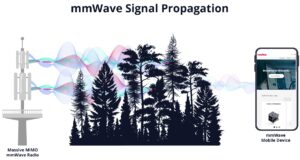
Figure 1. Trees, glass, buildings, walls, rain, and most other things block mmWave signals. At these frequencies, direct line-of-sight makes all the difference.
Propagation, or a signal’s ability to travel through a medium, differs significantly between sub-6 GHz 5G and mmWave frequencies. As Figure 1 shows, mmWave signals have a limited or diminished ability to pass through buildings, trees, rain, and other objects between a transmitter and receiver. Repeaters and small cells can mitigate those issues.
In addition, mmWave radios use massive MIMO antennas with beam steering to increase efficiency and at much lower transmit power levels than omnidirectional antennas. The short range of mmWave signals means that radios may need to be located every 1,000 meters, as opposed to sub-6 GHz radios, which can be several kilometers apart. This is one element of the cost that network operators face.
Design challenges of mmWave
Designing a mmWave radio brings other challenges. As the frequencies increase, mmWave components, PCB materials, PCB traces, and interconnects that minimize signal loss costs more than those designed for lower frequencies. For this, consider the coaxial connectors shown in Figure 2. The common SMA connector can work to 18 GHz.
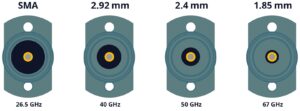
Figure 2. Higher frequencies reduce connector size, but manufacturing tolerances also shrink, making them more expensive.
At mmWave frequencies, RF connectors need smaller sizes to efficiently carry the signal. When moving to mmWave, you might use a 2.92 mm connector that can work to 40 GHz. Unfortunately, mechanical tolerances of the inner components within the connector must be more stringent than for SMA connectors. These tighter tolerances can be two-to-three times more costly than ones used in systems operating under 10 GHz.
In a 5G sub-6 GHz radio system, board-to-board RF coaxial connectors often route RF signals between the power amplifier board, filter, and antenna. As the number of transmit channels increases, engineers prefer the three-piece connections shown in Figure 3 to achieve axial and radial alignment during assembly.
For an active massive MIMO antenna system with 64 transmit channels, this would equate to at least 64 RF board-to-board sets per radio. Some massive MIMO active antenna systems have 128 transmit/128 receive channels or more. If the RF connector three-piece solution is an average of $0.60 per set, this suggests the connector content of the active antenna/radio could be more than $150.
EMI and crosstalk
High-frequency signals pose additional challenges for connector and cable designs. Using the massive MIMO example, with RF coaxial systems located near one another, you must minimize EMI and crosstalk. Shielding becomes more critical on separable interfaces (coaxial connectors) or, if used, coaxial cables. Many RF board-to-board connectors use slotted outer ground conductors that let them slide or snap together when mated. The design of these slots and any potential openings with axial misalignment must be carefully managed to minimize EMI.
Signal attenuation presents another challenge. As channel numbers increase, the output power per channel typically decreases. That decreased output power increases the need for low-attenuation RF transmission paths (such as board-to-board connector systems). Many connectors found in sub-6 GHz applications use molded dielectric materials as a compromise between signal attenuation and cost. Because attenuation increases with frequency, most molded dielectric materials used in RF connectors aren’t efficient enough for mmWave radio systems. RF connectors that operate to 100 GHz and higher typically use air as the primary dielectric. Small, molded support beads support the center conductors. Some connectors, like SMP or SMPM (Figure 4), have polytetrafluoroethylene (PTFE) dielectric materials and may be a reasonable compromise.
PCB materials also pass RF signals within radios. There are similar considerations for PCB materials and construction of the RF coaxial challenges mentioned above. Low-loss PCB materials are available today, but these carry a premium compared to materials used in sub-6 gigahertz systems. EMI and crosstalk tend to be managed using multiple-layer PCBs, vias, and other isolation techniques. 5G massive MIMO antennas that cover mmWave frequencies between 22 GHz and 39 GHz may use ten or more PCB layers to achieve reasonable performance. Considering the moderate output power per channel and the effects of beam steering of massive MIMO signals, achieving the desired effective isotropic radiated power (EIRP) of the system can be difficult.
What about 6G?
In 6G, mmWave radio systems that may play a role include a range of products from dielectric waveguides to molded antennas. These technologies direct the incident angle of the beam toward the user, which minimizes EIRP reduction in beam steering. Work on digital beam steering devices and other technologies continues to enhance mmWave radio performance. Coaxial connectors that operate up to 145 GHz are now available should 6G move into the terahertz frequency spectrum.
As 6G research continues, frequencies between 6.4 GHz and 15 GHz are also being considered. This may suggest that 6G will adopt some of the lessons learned in 5G RAN deployment strategies, leaning on a lower frequency spectrum.
At this time, we still don’t know how 6G will differ from 5G or 5G-Advanced. Millimeter-wave frequencies have much greater bandwidth than sub 6 gigahertz signals, roughly 1.2 GHz versus less than 600 MHz. How will systems be developed and deployed that make economic sense for the wireless network operators? As the theoretical use cases take time to develop, will 6G be a compromise that finds the most benefit from the spectrum from 7 GHz to 15 GHz? Perhaps AI, autonomous vehicles, VR, and the expansion of fixed wireless access (FWA) will drive the industry toward greater use of the mmWave spectrum. It’s possible that by 2035, we will all want to holographic calls for meetings instead of video conferencing. Considering how we used our mobile devices during the 2G/3G era as compared to today, it’s clear we’ve come a long way.
There must be a new use case or application in the not-too-distant future that will continue to drive the need for greater bandwidth. Because many of the wireless network operators already have ownership of this valuable spectrum, they will be happy to make it available so long as the economics make sense.

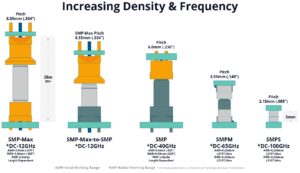


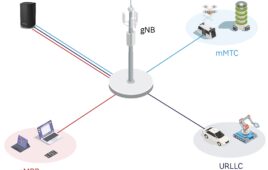
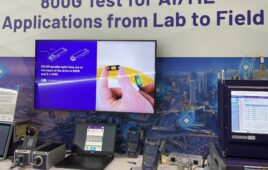
Tell Us What You Think!